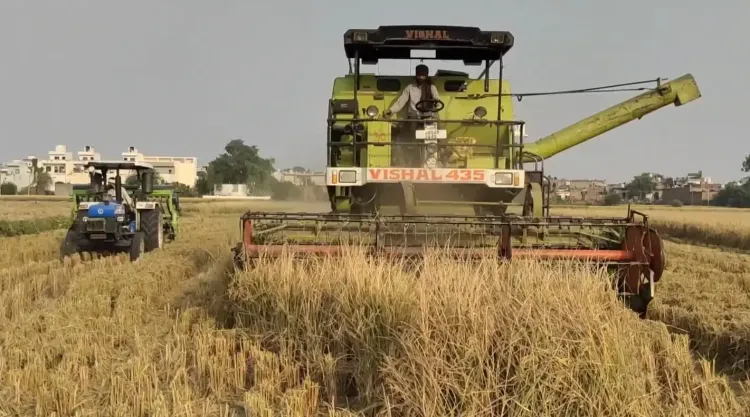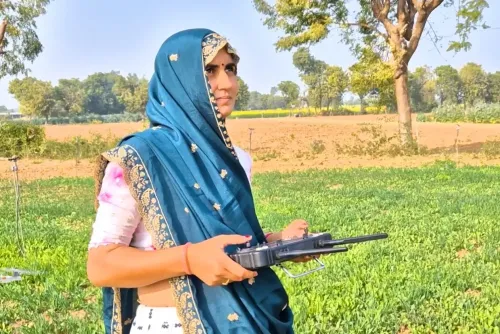How Has Haryana's Government Subsidy on Agricultural Equipment Reduced Stubble Burning?

Synopsis
Key Takeaways
- 95% reduction in stubble burning incidents in Haryana.
- Government offers 50% subsidies on agricultural equipment.
- Introduction of Super Seeders has made residue management easier.
- Farmers are adopting better practices for sustainable agriculture.
- Community efforts are essential for environmental protection.
Karnal, Oct 23 (NationPress) As the Delhi-NCR area prepares for the annual challenges of stubble burning and the ensuing air pollution, Haryana’s agricultural sector has emerged as a national model for effective crop residue management. This year, the state has seen an astounding 95 percent decline in incidents of paddy stubble burning during the 2025 harvest season.
Data from the Indian Council of Agricultural Research (ICAR) indicates that only 7 cases of stubble burning were recorded up to early this month, a stark contrast to 150 incidents in the same timeframe last year.
The significant shift is attributed to government subsidies for agricultural machinery and committed teams working to deter stubble burning.
Farmers now benefit from a 50 percent subsidy on agricultural equipment, which has significantly contributed to reducing air pollution caused by stubble burning.
Moreover, incentives for adopting better crop residue management practices have transformed the methods used to dispose of paddy stubble.
Haryana's agricultural department is providing subsidies on tools like Super Seeders, which have revolutionized crop residue management, making it easier and more efficient.
Farmers from Karnal have shared their positive experiences with this initiative.
Bakshi Lal, a farmer from Takhana village in Karnal, expressed, "We used to be quite anxious about burying the stubble post-harvest. However, with the introduction of Super Seeders, we can now incorporate the stubble back into our fields after harvesting paddy."
He added that this practice greatly enhances soil fertility and noted that many farmers are reaping the benefits of this initiative.
Previously, farmers resorted to burning stubble due to a lack of agricultural equipment. With the introduction of Super Seeders and subsidies from the central government, many farmers report increased satisfaction.
Lal also urged his fellow farmers to avoid burning stubble, emphasizing its detrimental effects on the environment.
“Burning stubble kills beneficial bacteria in the soil, ultimately reducing its fertility. Farmers should consider installing an SMS machine on their farms to harvest paddy and mix the stubble back into the fields. This will not only benefit them but also improve the fertility of their land,” he elaborated.










